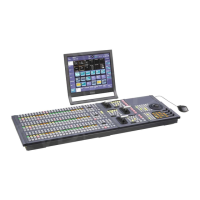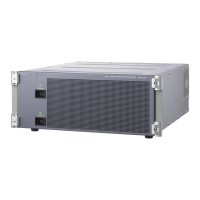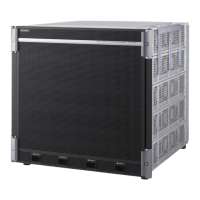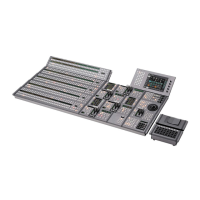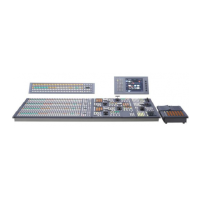DME Wipe Snapshots / Creating User Programmable DME Patterns 121
Slide, Split, Door,
Page Turn, Roll,
Squeeze, Mirror,
Sphere, Character
Trail, Wave, Ripple,
2D Trans, 3D Trans,
Sparkle, Split Slide
Flip Tumble, Mosaic,
Defocus
Two-channel picture-
in-picture
DME Wipe Snapshots
You can snapshot and save a DME wipe pattern together
with the current settings of its modifiers and pattern limit
in a dedicated register for recall when required.
There are 10 DME wipe snapshot registers for each of the
switcher banks.
Saving to and recalling these registers can be performed
using the Flexi Pad or a menu operation.
For details about Flexi Pad operations,
1
“DME Wipe
Pattern Operations in the Flexi Pad” (p. 123).
Keyframe effects in the global channel
When the effect with the same number as the reference
channel is present on the DME global (GLBL) channel,
executing the user programmable DME will also execute
the effect on the global channel simultaneously.
When executing a user programmable DME, take note of
whether the effect is present on the global channel.
User Programmable DME Transition
Mode
To create a user programmable DME, it is necessary to set
the transition mode (i.e., the way in which the effect
moves). To set the transition mode, use the Key Frame
DME Wipe Snapshot Operations
with the Menus
You can save, recall, and delete in the same way as for
wipe snapshots.
For details about the method of operation,
1
“Wipe
Snapshot Operations with the Menus” (p. 107).
Creating User
Programmable DME
Patterns
With a user programmable DME, you can use DME effects
created through the use of keyframes for a transition on the
switcher system.
Note the following points when creating a keyframe effect
for use as a user programmable DME pattern.
Notes
User programmable DME patterns cannot be created nor
used on the MVS-3000.
Register numbers and pattern numbers
When saving a keyframe effect as a user programmable
DME pattern, specify the 3-digit register number that
corresponds to the pattern number as shown in the
following table.
For details about registers,
1
“Registers” (p. 239).
>DME User PGM menu (6114).
For details about transition mode settings,
1
“Transition
Mode Settings for User Programmable DMEs” (p. 256).
The following transition modes are available.
a)
Transition according to DME wipe patterns 1202, 1203, or 1204
b)
Transition according to DME wipe pattern 1201
c)
Transition according to DME wipe pattern 1251
For details,
1
“Overview” (p. 111).
Notes
For the following group of effects available in two-channel
mode, user programmable DME wipe patterns cannot be
created.
Page turn, Roll, Brick
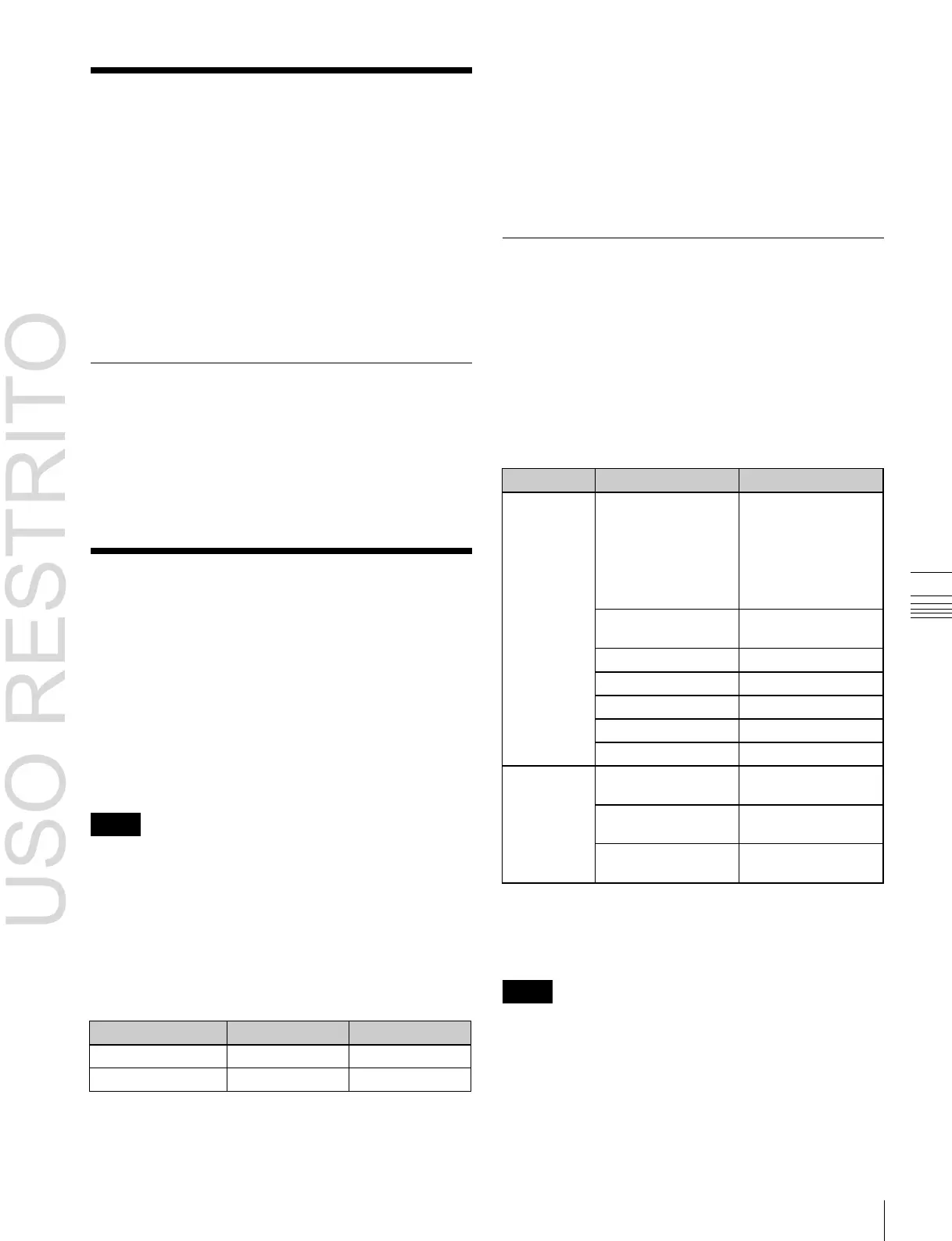